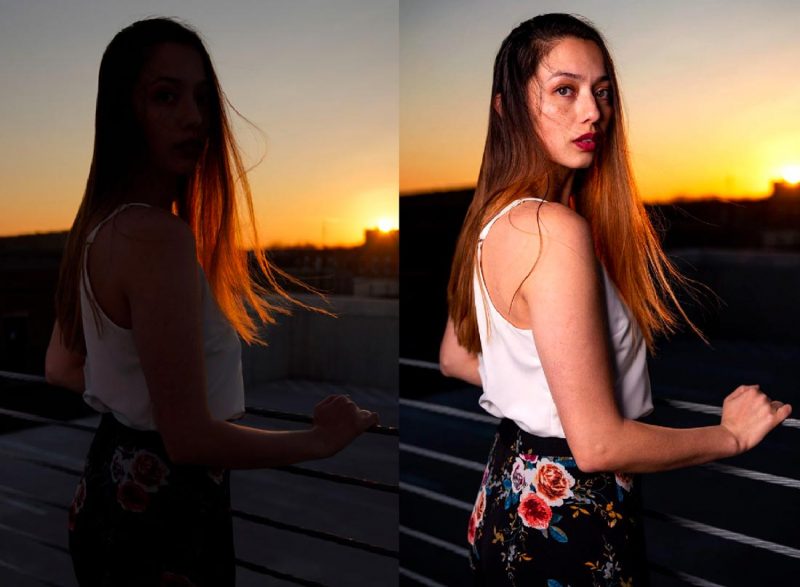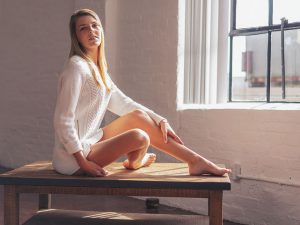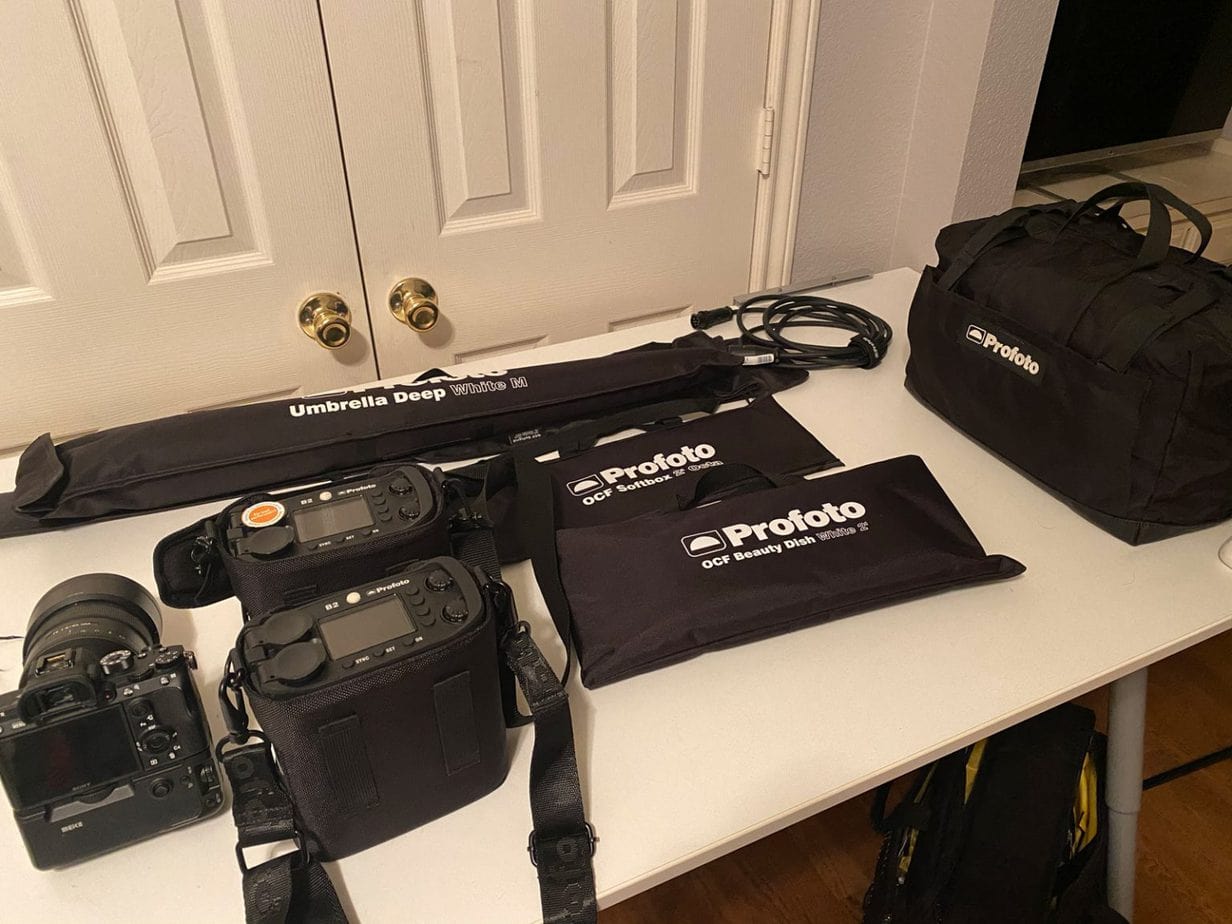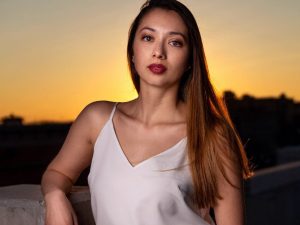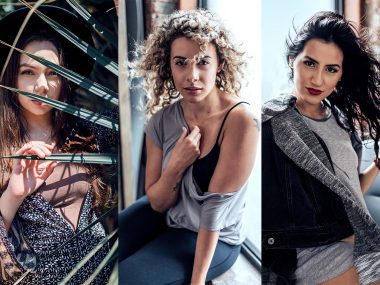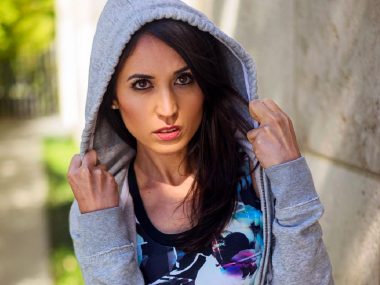Natural light vs flash photography will always be a subject of discussion for portrait photographers. Let’s discuss the benefits and drawbacks of each lighting type and see which one might work best for you.
When I started shooting portraits, I came across 3 types of photographers.
- Natural light photographers
- Flash photographers
- Hybrid Shooters – Shoots both
It seemed every photographer I met had a strong preference for either natural light or off camera flash. Rarely did I meet anyone that liked to do both.

Natural Light vs Flash photography
Professional photographers utilize both natural light and off-camera flash systems but this is dependent on the shoot and specialized circumstances of the composition. They control light in their scenes and sometimes supplement natural light with flash photography in order to fill in dark shadow areas of a photo.
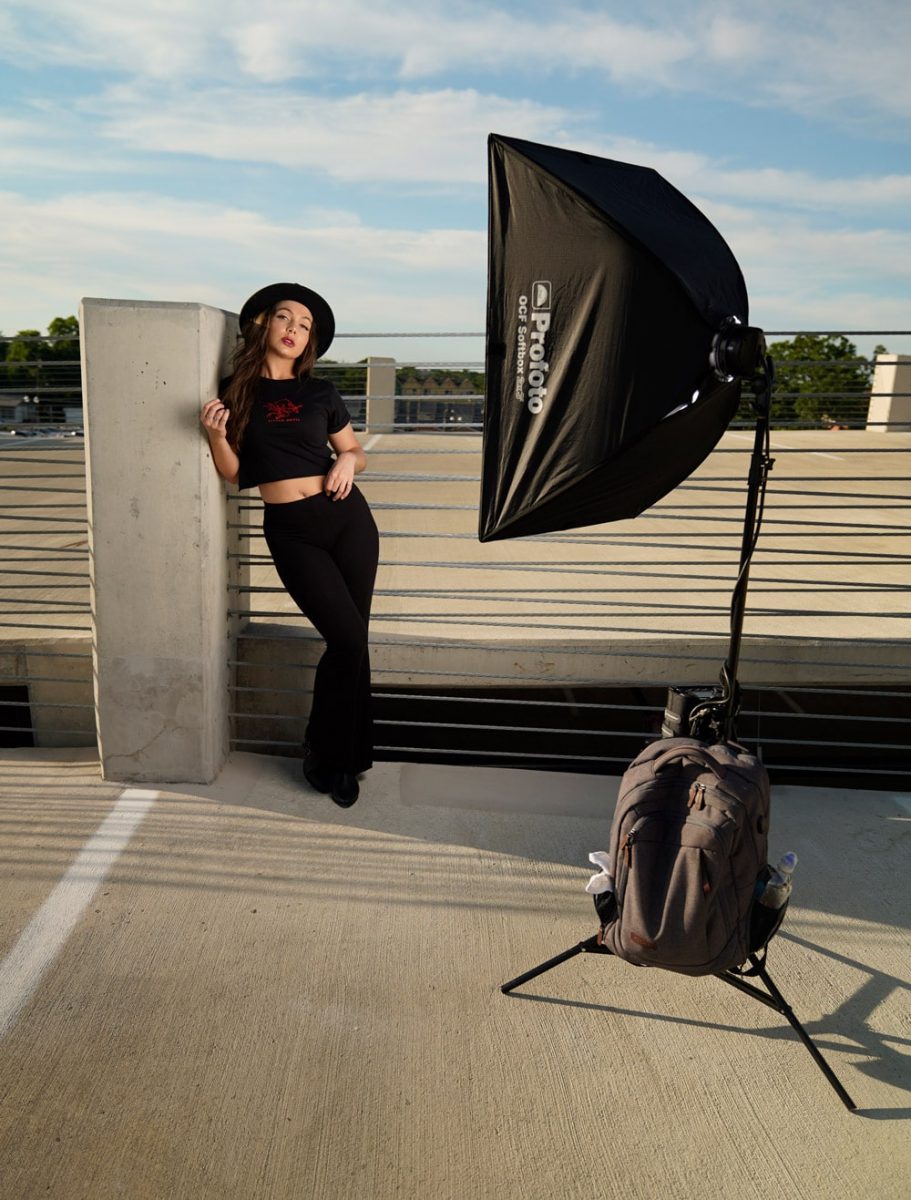
This means there is no “one-size fits all” answer to natural light vs flash photography. It is up to the photographer and their own style or preference in portrait lighting.
Controlling light in portraits
Before we jump into the benefits and disadvantages of both styles of light, let’s make sure we understand the importance of light.
Light is a foundation to any good portrait. The lighting is key to highlighting your subject or making the subject the focal point of any scene.
Many beginner photographers will use natural light for portraits as this is a free and abundant source of lighting. Outdoor shoots are popular and shooting during different times of the day like sunrise or sunset can make for dynamic portraits
Studio photographers and indoor photographers lean more towards flash photography. This way they can completely control the lighting in their portraits and can make minor adjustments as needed.
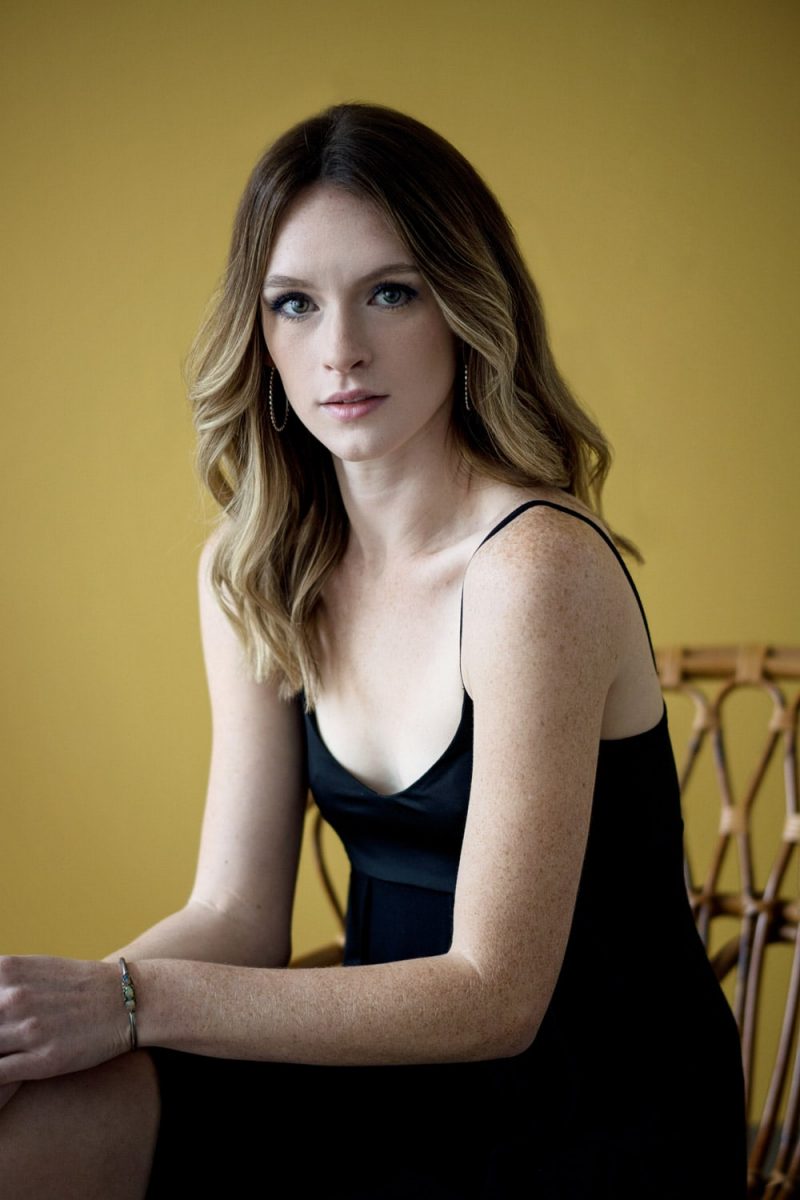
Benefits of Natural light
Now that we understand why lighting is so important, let’s learn some of the benefits of natural light and also learn why so many beginners and advanced photographers prefer this type of lighting.
1. Natural light is free to use
There is no other light source as FREE and abundant as the sun. Many photographers take advantage of the daylight hours to shoot photos. Many photographers specialize in natural light photography as it gives a very unique look for portrait photography.
2. Natural light is great for beginner photographers
Natural light photography is great for beginner photographers because you can jump right into taking photos with minimal gear.
You don’t need much more than a camera, lens and maybe a reflector if you want to redirect the natural light.
3. Dynamic sunrise and sunset lighting (golden hour portraits)
The early morning and evenings provide some of the best times to shoot outdoors in the natural light. The sun is very low and provides a soft glow for the shoots.
Evening time is extra special because of golden-hour. This is around sunset when the sun is very low on the horizon and provides beautiful sunset colors in the sky.
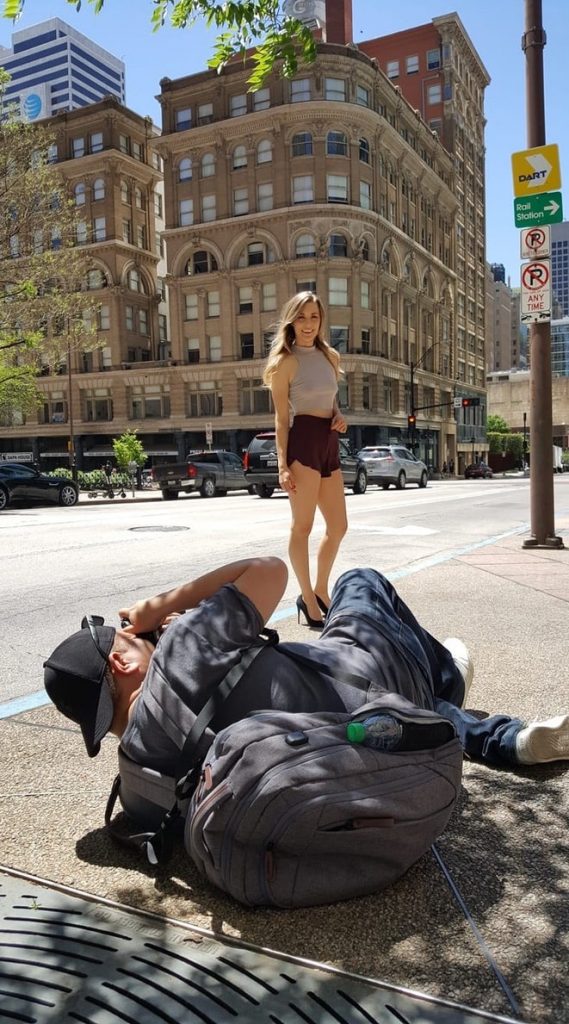
4. Less equipment to carry for natural light shoots
Natural light photography requires less equipment to carry, so I can grab my camera and go without worrying about hauling around extra flash equipment. I do carry a 5-in-1 reflector just in case to bounce light back into my subjects. Sometimes less is more, and I like to shoot with minimal gear on my shoulders or in my bag.
Disadvantages of Natural light
Just like the benefits, there are a few drawbacks to natural light photography that you need to keep in mind before jumping in.
1. Natural light can create harsh shadows
Shooting in the middle of the day when the sun is directly above will give you weird shadows on your models face or body.
We call this raccoon eyes on the face. The best thing to do is work your model in a mode shaded area to provide more even lighting for your shoot.
Don't Miss This
2. The weather outdoors can be unpredictable for natural light
You never know if the weather will be rain or shine. It seems like it changes constantly. Be prepared to adapt to weather conditions in your area if you are only using natural outdoor daylight for your portrait shoot.
3. Natural light can be inconsistent
Shooting at different times of the day outdoors or indoors is going to provide different lighting based on the sun’s location. Be aware of the time of day, and be prepared to adjust your shoot accordingly.
4. Time changes can limit day light hours
During the spring and summer months, sunset is not until later in the evening. This gives you more time to shoot during the day and late afternoon.
During the fall and winter months, sunset happens earlier in the afternoon and you are not able to shoot with much natural light.
This can limit your photography season if you are not supplementing your photography with flash or speed-lights.
5. Natural light can create color casts on subjects
The natural light from the sun is big and bright but also can cast a yellow to orange tint to your photos during sunset or golden hour.
This might give you an unwanted color cast in your photos if you are not customizing your white balance in camera. Make sure to check your shots to see if you’re getting big color differences between each photo.
Benefits of Flash Photography
Now, let’s take a look at some of the benefits of using flash (speedlight or strobes) for your portrait photography.
1. You can control all aspects of your flash lighting
Shooting with strobes allows you to dial in the exact power of lights and control the settings of your camera for any shoot.
Using a light meter, you can dial your lighting to any specific style of shooting.

2. You can use modifiers to shape the light
You can purchase different types of lighting modifiers such as softboxes, umbrellas and beauty dishes for your strobes. This will help shape the light for all your studio shoots.
3. You can use flash on or off camera
One of the benefits to using flash is you can use it on camera or off camera. Off camera flash is a highly beneficial light source as you can control distance and power of your light.
You can also control the output by modifying the light with softboxes or other light modifiers.
You can place your flash on-camera as well for direct light if you don’t have time to use an off-camera flash system.
4. You can have multiple lights for a single shoot
You can use off camera flash and have multiple lights that are controlled from a single remote on your camera.
This can allow you to control the entire lighting of a composition or scene as you can control power from your camera.
5. You can use flash indoors or outdoors
There are lighting setups that can be used for indoor and outdoor shoots. You can use speedlights or HSS strobes to overpower the sun and create beautiful daytime photos outdoors.
6. You can mix flash with natural light
High-Speed Sync is the ability to use a specific flash at a higher shutter speed. Normal strobes of camera sync speeds are around 1/160 sec, but with High-Speed Sync, you can bring your shutter to faster speeds to cut down on ambient lights but let in off camera flash lighting.
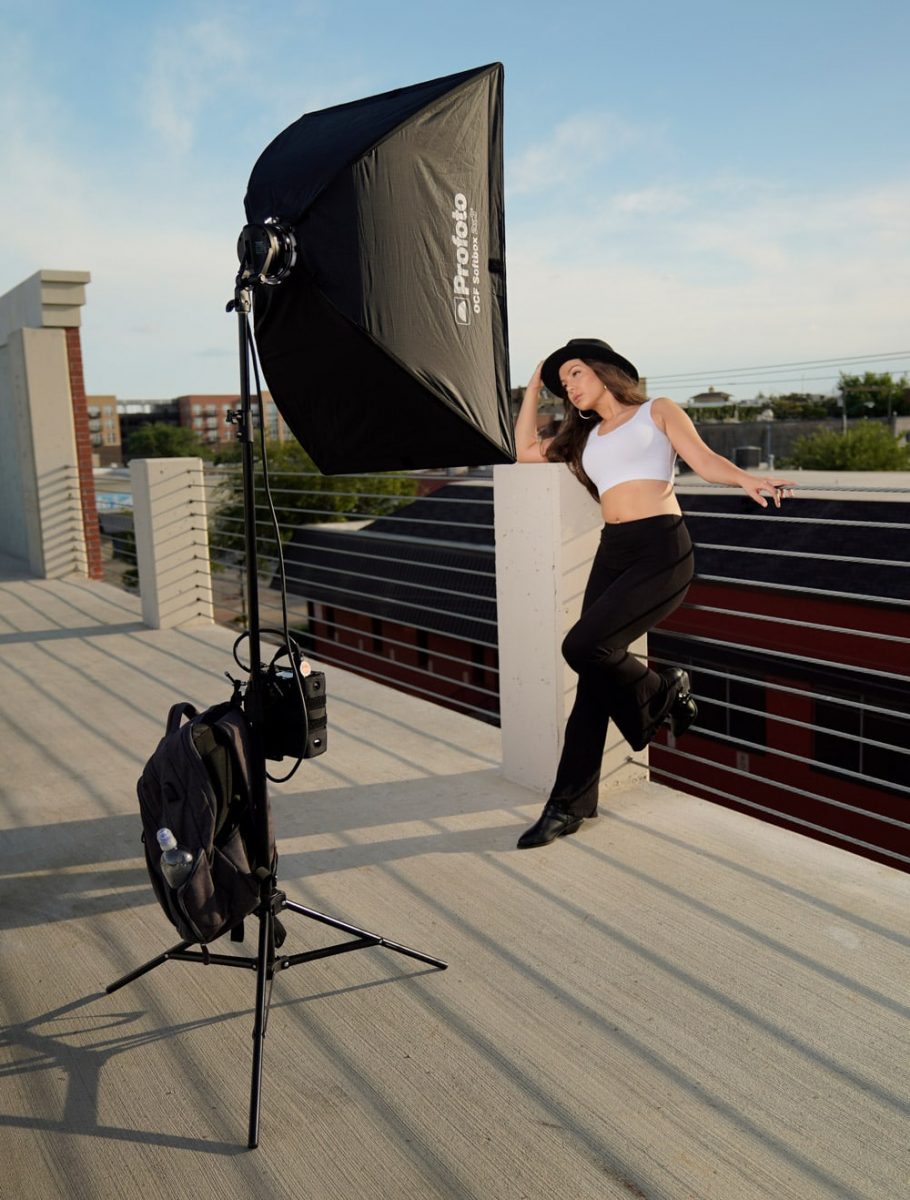
7. You can overpower the sun with flash
A big benefit to using flash outdoors is you can fill in the shadows of the harsh day light sun.
It is referred to as overpowering the sun (even though that’s not really possible as the sun is too bright)
Many photographers will raise their shutter speed and shoot in high-speed sync mode so they can lower the ambient light outdoors from the sun, and then turn on their flash to light the subject in frame.
Drawbacks of Flash Photography
Just like natural light, there are also a few drawbacks to using flash for portraits. Let’s check out some of these drawbacks below.
1. Flash systems can be expensive
Speed lights are a good introduction to off camera flash, but when you start needing more power you will be paying a higher premium for the equipment.
Flash strobes are the next step up from speed-lights (75ws). They range in costs from $200 and up depending on the power and other specific features.
Flash strobed can represent a large investment for photographer needing more powerful lighting on location or in studio.
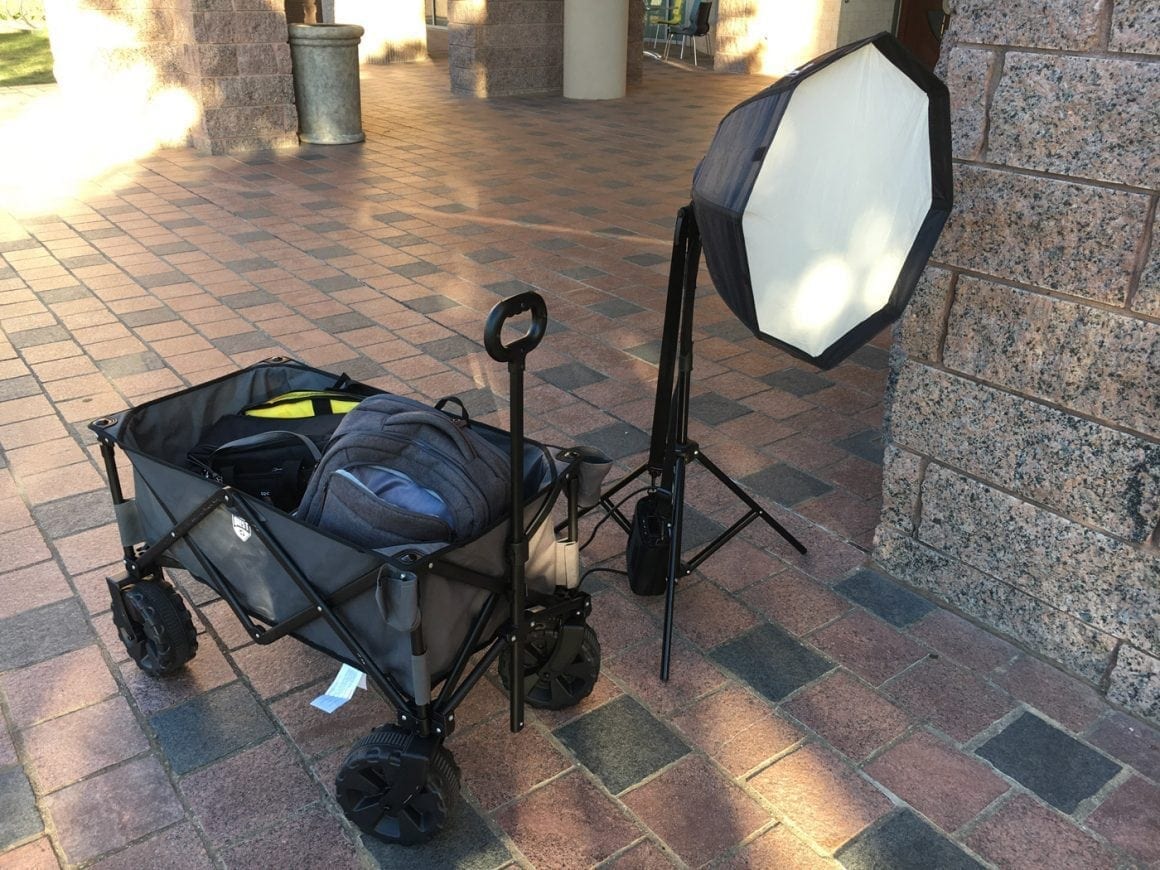
2. Flash requires you carry more equipment
With off camera flash, you’ll need to have more equipment with you for outdoor shoots. For example, you’ll need a light stand, sandbag or heavy bags weight down the light and also any modifiers like soft boxes or strip boxes.
The more lights you add to your shot the more equipment you will need to carry on location. This can add up quickly so keep this in mind if you plan to use more than one light.
3. Speed lights are not very powerful
Small speed-lights average around 75ws of power. Many photographers try to combine two or three lights into a single unit in order to get a stronger flash.
Speed lights are good for low light situations but can be difficult to use in brighter scenes where you need to raise your shutter speed and run high speed sync.
You’ll need to slow down when shooting so your speedlight has time to recycle to the desired power.
This can slow down an entire shoot if this is all you have for lighting.
4. Studio strobes are not very portable
Some strobes have interchangeable batteries, but some require heavy external battery packs. This can make changing locations a little more of a hassle, but it can be done.
Some studio strobes do require you to plug-in the strobes to an electrical outlet so you will not be able to use these on location unless you have a portable generator or alternative source of power.
5. Setup times can make for longer shoots
When getting into studio or on-location, you will need some additional time for setup and teardown of your equipment. Make sure to also figure in time to dial in your lights for correct exposures.
6. Flash systems and modifiers can be more difficult to use outdoors
Like all electronics, they are susceptible to mother nature. This means the wind and rain can easily damage your equipment if it is not properly secured.
The weather can make it challenging to use outdoor lighting equipment so keep this in mind when shooting outdoors during inclement weather.
7. There is a larger learning curve to learning flash photography
Learning flash is not always that simple for beginners, but it is worth learning in the long run. Flash has a small learning curve, but you need to invest time and energy in practicing with the equipment in order to learn to use it to its full capabilities.
The biggest differences between natural light and flash photography
1. Price of equipment
Shooting natural light is FREE and doesn’t require a large investment for beginner photographers. All you need is your camera and lens, and you can get started very quickly.
2. Equipment to carry
Depending on the flash or strobes you want to use on site, this will add more load to your carry for on location shoots. Then you also need to worry about power and extra batteries for your strobe.
It will help to have an assistant on site with you to help with the extra equipment if possible.
3. Learning curve
Natural light is far easier to learn than flash photography for beginners. I always recommend new photographers start with natural light and then slowly move into flash photography when they are more comfortable shooting with their camera.
Best lighting for beginner portrait photographers
I would recommend beginner photographer start with natural light and then move into flash photography. This way you can start learning how to expose for ambient light of a scene quickly and then move into adding additional light sources as needed in the future. Natural light is a good way to get a foundational understanding of lighting before moving into more advanced principles of light.
Do Professional photographers use flash
Professional photographers use both natural light and artificial lighting for their portrait work. Advanced photographers can use up to 5 or 6 lights to compliment a subject in studio and this can go higher depending on the scene.
Professional photographers will also use available lighting in order to get the shots they are looking for.
How do you make flash look like natural light
In order to make flash look like natural light you will need to understand the size of your light source.
For example, if you want to mimic large soft window light, then you will need to place your lighting in a large modifier in order to soften the lighting.
You’ll also need to consider the color temperature of the light in order to match the specific color cast from the time of day.
Sunset and sunrise have warmer orange tones so you may use a CTO color gel to adjust your light temperature. The opposite effect can be achieved using cooler color gels as well.
Does using flash make you look more professional
Using flash does show that you have a more advanced understanding of lighting and that you are investing in more equipment for your portrait shoots.
I’m not sure this makes you look more professional, but it does show you are taking the time to understand lighting and how to shape it to your needs.
How to start with natural light photography
The best way to start natural light photography is to get your camera and lens and a subject to shoot for portraits.
Start by putting your camera is either shutter priority or aperture priority mode so you can understand how the camera chooses other settings to expose for a scene.
Once you start learning more and understanding aperture, shutter speed and ISO and how they work together, you can switch to manual mode to have more control of your settings.
As natural light tends to change over the day this is a good way to learn how to adjust your setting as the day is going by.
How to start with flash photography
You can learn flash photography by purchasing a small speed light and remote trigger for a minimal investment.
Then watch YouTube videos that will help you setup the equipment with your camera and then start practicing.
I would recommend shooting portraits with your lighting at different parts of the day in order to understand how to balance your flash with outdoor lighting.
Once you have this down, you can start looking into more dramatic effects with high-speed sync and using the power of the flash to your advantage.
Can you mix both natural light and flash
It is possible to mix both natural light and flash in your portrait photography and still get a natural look. Work to expose for your ambient settings and understand the direction that the light is coming into the scene.
Then, place your speed light or flash on the opposite side and start with a low power setting. Raise the power as needed to balance the shadows made from the natural light in the scene.
Do I prefer natural light or flash photography?
When considering both options, I really do like shooting natural light more often than studio lighting. This is a personal preference, and it is an easy choice for me.
I started with natural light in my TFP portrait photography shoots. Everyone has a unique style and lighting will always play a huge part in that style.
Final thoughts on natural light vs flash photography
Discover which lighting is better suited for your style by going out and practicing in all types of light.
Rent some equipment online if you want to try out new things first. This is the best way to find what works for you. Don’t worry about what the professionals use.
They have years of experience and a core understanding of lighting principles.
Build a solid foundation for your lighting techniques and build up from there. Happy shooting!
*Affiliate Disclaimer - I am a proud partner of the various affiliate programs including the Amazon.com Affiliate Program. When you click on my links and make a purchase I make a commision which goes to helping me support this blog. Thanks! |

